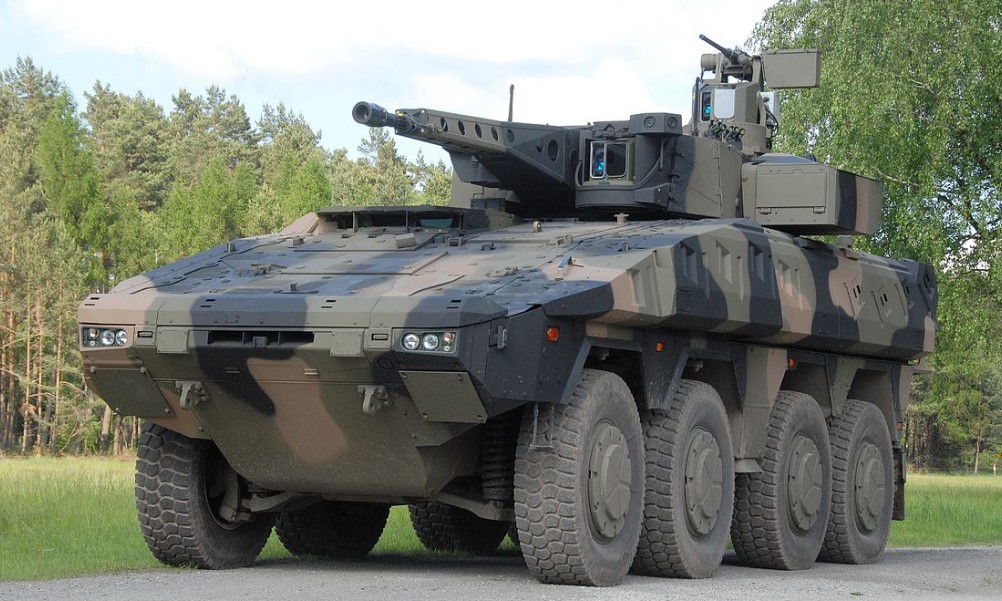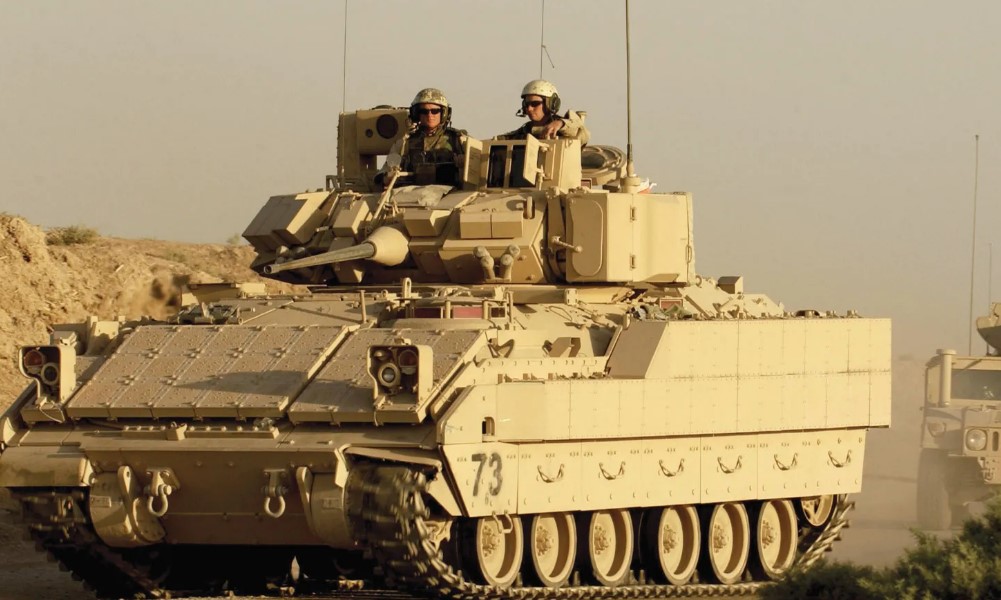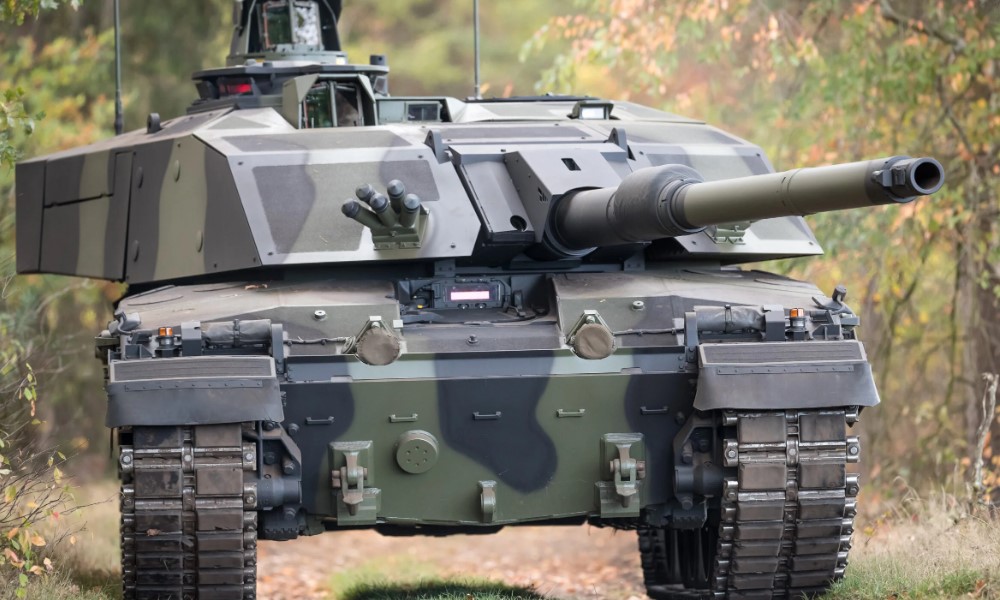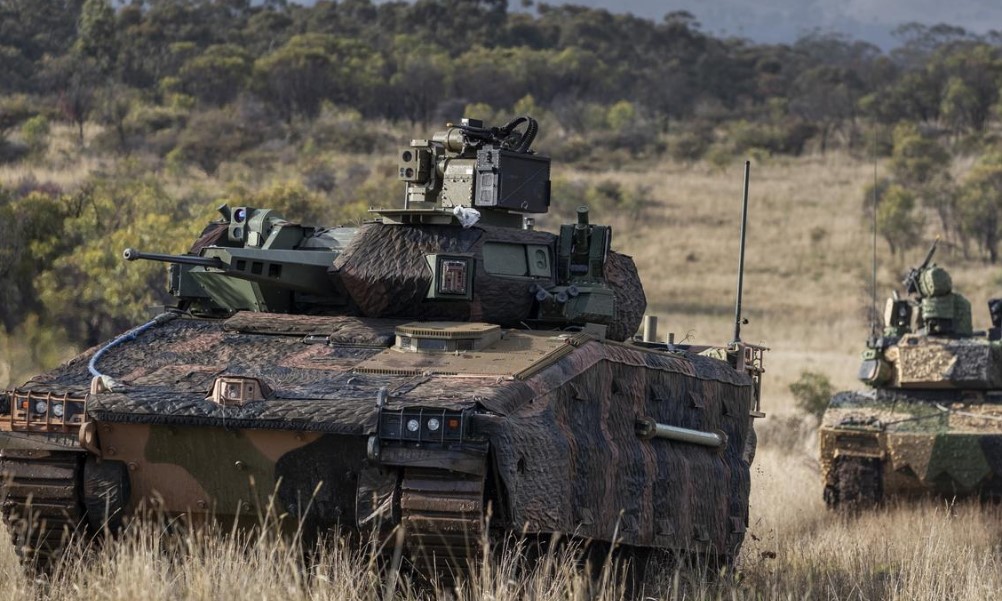In the ever-evolving landscape of modern warfare, Armored Infantry Fighting Vehicles (AIFVs) have become indispensable tools for military forces around the globe. Designed to provide a balance of protection, firepower, and mobility, AIFVs enable infantry to be transported safely into combat zones while also supporting them with offensive capabilities. This article dives deep into the world of AIFVs, exploring their key features, real-world examples, and the immense benefits they bring to the battlefield.
What Are Armored Infantry Fighting Vehicles?

Armored Infantry Fighting Vehicles (AIFVs) are versatile combat vehicles that combine the transport functions of traditional armored personnel carriers (APCs) with the firepower of tanks. Unlike APCs, which focus mainly on transporting troops, AIFVs are equipped with heavier weapons like autocannons, anti-tank guided missiles, and machine guns, allowing them to engage in frontline combat.
AIFVs are typically built with advanced armor systems to protect troops from small arms fire, artillery fragments, and even some anti-tank weaponry. Many models feature modular armor, allowing them to be upgraded based on the threat environment. Moreover, AIFVs often boast amphibious capabilities, enabling them to traverse rivers and other bodies of water, adding an extra layer of tactical flexibility.
Key Features of Modern AIFVs

Modern Armored Infantry Fighting Vehicles (AIFVs) are crucial in contemporary military operations, offering a blend of mobility, firepower, and protection. Below are the key features that make AIFVs indispensable for armed forces across the world:
1. Advanced Armor Protection
AIFVs are designed with robust armor systems that protect both the vehicle and its occupants. The armor is often made from composite materials that can withstand small arms fire, artillery fragments, and even anti-tank weapons. Some AIFVs are equipped with modular armor, which allows for adjustments based on the mission. Additionally, many vehicles include spall liners to protect the crew from internal debris in the event of a shell impact.
2. Firepower
A critical differentiator between AIFVs and other military vehicles is their firepower. Most AIFVs are equipped with autocannons ranging from 25mm to 40mm, capable of firing armor-piercing rounds. In addition to autocannons, AIFVs are also armed with anti-tank guided missiles (ATGMs) and heavy machine guns, providing the ability to engage both infantry and heavily armored targets. These weapons allow AIFVs to serve not only as troop carriers but also as effective combat platforms.
3. Mobility and Terrain Adaptability
AIFVs are engineered for all-terrain mobility, allowing them to operate in diverse environments such as deserts, forests, urban areas, and mountainous regions. Many models also come with amphibious capabilities, enabling them to cross rivers and water bodies without requiring separate transport solutions. This combination of mobility and flexibility ensures that AIFVs can deploy infantry into hard-to-reach or heavily contested areas.
4. Advanced Battlefield Systems
Modern AIFVs are integrated with advanced communication and battlefield management systems, which allow real-time coordination between units. These systems include target acquisition sensors, thermal imaging, and GPS navigation, enabling precise targeting and situational awareness on the battlefield. This technological advantage helps reduce response times and improves operational effectiveness.
5. Troop Transport Capacity
While capable of engaging in direct combat, AIFVs are primarily designed to transport infantry into combat zones. Most models can carry between 6 to 10 soldiers, along with their equipment, safely and quickly. This dual role of combat support and troop transport is what sets AIFVs apart from traditional armored personnel carriers (APCs).
Detailed Benefits of Armored Infantry Fighting Vehicles

1. Superior Protection for Troops
The primary role of an AIFV is to transport soldiers safely into battle. Equipped with advanced armor plating and active protection systems, AIFVs can effectively shield their occupants from a wide range of threats, including small arms fire, artillery fragments, and even anti-tank missiles. This enhanced protection significantly reduces the risk of casualties during dangerous missions.
Moreover, the modular armor on some AIFVs allows military units to upgrade or adjust their protection levels depending on the mission. For instance, if an AIFV is expected to encounter anti-tank threats, it can be equipped with additional reactive armor to mitigate damage from such weapons.
2. Enhanced Battlefield Firepower
Unlike standard troop carriers, AIFVs are armed with powerful weapons that enable them to provide fire support in combat. These vehicles often feature autocannons, heavy machine guns, and missile systems that allow them to engage both ground troops and enemy vehicles. The presence of advanced targeting systems also means that AIFVs can engage enemies at long distances, providing suppressive fire to protect advancing infantry.
The combination of high mobility and firepower makes AIFVs formidable opponents on the battlefield. This capability also allows military forces to reduce the number of separate vehicles needed in a battle zone, as AIFVs combine troop transport and combat support in one package.
3. Versatility in Multiple Roles
Armored Infantry Fighting Vehicles are capable of performing a range of tasks in addition to infantry transport. For example, they can serve as command centers, mobile artillery platforms, or reconnaissance units. This versatility allows military commanders to deploy AIFVs in various roles, making them highly valuable assets in both offensive and defensive operations.
Some modern AIFVs are equipped with sophisticated communication and battlefield management systems, enabling them to serve as command and control hubs. This capability ensures that troops on the ground can coordinate with commanders and other units, improving battlefield efficiency.
4. Amphibious Capabilities
Many AIFVs have been designed to operate in amphibious environments, making them even more flexible. This feature is particularly useful in operations that involve crossing rivers or navigating coastal regions. By eliminating the need for additional transport vehicles, amphibious AIFVs provide tactical advantages during both offensive and defensive operations.
Top 5 Armored Infantry Fighting Vehicles (AIFVs) in 2024

Here are five of the most advanced and widely used AIFVs in military service today. Each vehicle offers a unique set of features and benefits, making them well-suited to various military operations. We will explore their specifications, use cases, pros, cons, and pricing.
1. CV90 Infantry Fighting Vehicle
The CV90, produced by BAE Systems, is one of the most versatile and combat-proven AIFVs in use today. It has been adopted by numerous NATO member countries and is praised for its adaptability and high performance.
- Features:
- 40mm autocannon for powerful fire support.
- Modular armor, allowing for customized levels of protection.
- Active defense systems for detecting and neutralizing threats.
- Advanced communication and control systems.
- Use Case: Ideal for both infantry transport and heavy combat support in challenging environments.
- Pros: Excellent firepower and protection, highly customizable.
- Cons: Expensive to maintain due to its advanced technology.
- Price: Approx. $6 million.
2. Bradley Fighting Vehicle (BFV)
The Bradley Fighting Vehicle is an American-made AIFV, known for its proven combat effectiveness. It has been a staple of the U.S. Army for decades.
- Features:
- Equipped with a 25mm M242 Bushmaster chain gun.
- TOW anti-tank missile system.
- Amphibious operations capability.
- Strong armor and reactive systems.
- Use Case: Well-suited for infantry transport and combat operations in a wide range of environments.
- Pros: Combat-proven, amphibious, and reliable in various terrains.
- Cons: Heavy weight affects mobility in some situations.
- Price: Approx. $3.2 million.
3. K21 Infantry Fighting Vehicle
The K21, developed by Hanwha Defense of South Korea, is designed to offer superior firepower and protection at a competitive price.
- Features:
- 40mm autocannon with advanced targeting systems.
- Anti-tank guided missile capability.
- Amphibious capabilities.
- Modular armor for added protection.
- Use Case: Ideal for rapid deployment and amphibious operations in coastal or riverine areas.
- Pros: Excellent firepower and mobility, affordable for many nations.
- Cons: Requires advanced training to operate complex systems.
- Price: Approx. $4.5 million.
4. Puma Infantry Fighting Vehicle
The Puma IFV, developed by Germany, is one of the most advanced AIFVs on the market, known for its state-of-the-art protection and firepower.
- Features:
- 30mm MK30-2/ABM autocannon.
- Advanced modular armor system.
- Spall liner for enhanced crew protection.
- Digital situational awareness systems.
- Use Case: Perfect for urban warfare and close combat scenarios.
- Pros: Exceptional protection and firepower, cutting-edge technology.
- Cons: High cost compared to competitors.
- Price: Approx. $7 million.
5. T-15 Armata
The T-15 Armata, produced by Russia’s Uralvagonzavod, is a heavy AIFV designed for use alongside the T-14 Armata main battle tank. It is known for its formidable armor and weapons systems.
- Features:
- 30mm autocannon.
- Kornet-D anti-tank guided missile system.
- Advanced active protection systems (APS).
- Heavy modular armor.
- Use Case: Designed for heavy combat and frontline support alongside main battle tanks.
- Pros: Outstanding protection and powerful armament.
- Cons: Extremely expensive and complex to maintain.
- Price: Approx. $8 million.
Comparison Table
| Vehicle Model | Use Case | Pros | Cons | Price | Features |
|---|---|---|---|---|---|
| CV90 | Infantry transport and fire support | High firepower, modular armor | Expensive maintenance | $6 million | 40mm autocannon, modular armor, active defense |
| Bradley Fighting Vehicle | Combat support and amphibious operations | Proven in combat, reliable and versatile | Heavy weight limits speed | $3.2 million | 25mm chain gun, TOW missile, amphibious |
| K21 | Rapid deployment, amphibious missions | Excellent mobility, affordable | Complex systems require training | $4.5 million | 40mm autocannon, guided missiles, amphibious |
| Puma | Urban warfare, close combat | Exceptional protection, cutting-edge tech | High cost | $7 million | 30mm autocannon, modular armor, digital systems |
| T-15 Armata | Heavy combat alongside tanks | Superior protection, active defense | Very expensive, complex maintenance | $8 million | 30mm autocannon, Kornet-D missiles, APS |
Use Cases of Armored Infantry Fighting
Armored Infantry Fighting Vehicles (AIFVs) play a pivotal role in modern military operations, offering a unique combination of firepower, protection, and mobility. Here are some key use cases where AIFVs excel:
1. Frontline Combat Support
AIFVs are designed to support infantry in frontline combat by providing both transport and firepower. Their armored protection shields soldiers from enemy fire while their mounted autocannons and anti-tank missiles deliver offensive capabilities. This dual role allows AIFVs to protect infantry as they advance into enemy-held territory, offering suppressive fire and engaging hostile forces directly.
2. Urban Warfare
In urban warfare, where close-quarters combat and maneuverability are crucial, AIFVs provide significant advantages. Their compact design and advanced weaponry make them ideal for navigating tight streets while offering superior protection against small arms fire, improvised explosive devices (IEDs), and other threats commonly found in city environments. AIFVs can deploy infantry directly into urban hotspots while offering fire support to neutralize enemy positions.
3. Amphibious Operations
Many AIFVs are equipped with amphibious capabilities, allowing them to operate in water-based environments such as rivers and coastal areas. This capability is especially valuable in operations requiring rapid cross-river deployment or beach assaults. AIFVs can transport infantry across water bodies without the need for separate boats or landing craft, providing flexibility in amphibious operations.
4. Reconnaissance and Surveillance
Equipped with advanced sensors, communication systems, and thermal imaging, AIFVs can be used for reconnaissance missions. Their mobility allows them to scout ahead of main forces, identifying enemy positions and terrain hazards while remaining protected from counterattacks. This information is crucial for planning larger operations and minimizing risks.
How to Buy Armored Infantry Fighting Vehicles
Purchasing AIFVs is a highly specialized process that typically involves government contracts and defense industry negotiations. Below are the general steps for acquiring these vehicles:
1. Contacting Manufacturers
Interested governments or defense contractors must reach out to the vehicle manufacturers or licensed resellers. Major AIFV manufacturers include:
- BAE Systems
- Hanwha Defense
- Rheinmetall
- Uralvagonzavod
2. Negotiations and Contracts
Depending on the number of vehicles required, the country’s defense budget, and the level of customization needed, negotiations will include details on pricing, delivery schedules, and support services like training and maintenance.
3. Pricing and Payment
Prices for AIFVs can vary significantly based on the specific model, required customizations, and the country’s military needs. Typically, AIFVs range in cost from $3 million to $8 million per unit. Payments are often made in installments based on delivery milestones.
4. Government Approvals
Purchases of military vehicles like AIFVs often require government approvals and licensing, particularly when crossing international borders.
FAQs
1. What are the key differences between AIFVs and APCs?
While both AIFVs and APCs transport infantry, AIFVs are equipped with heavier weapons, such as autocannons and missile systems, allowing them to engage in frontline combat.
2. What is the cost of an AIFV?
The cost of an AIFV ranges between $3 million to $8 million, depending on the model, features, and customizations.
3. Are AIFVs amphibious?
Many modern AIFVs, like the K21 and Bradley Fighting Vehicle, are amphibious and can operate in water, making them versatile for various terrains.
4. Can AIFVs be upgraded?
Yes, many AIFVs are designed with modular armor and weapon systems, allowing for upgrades and modifications depending on the operational needs.
5. Where can I buy AIFVs?
Armored Infantry Fighting Vehicles can be purchased directly from manufacturers such as BAE Systems, Hanwha Defense, Rheinmetall, and Uralvagonzavod. Government contracts and negotiations are typically required.